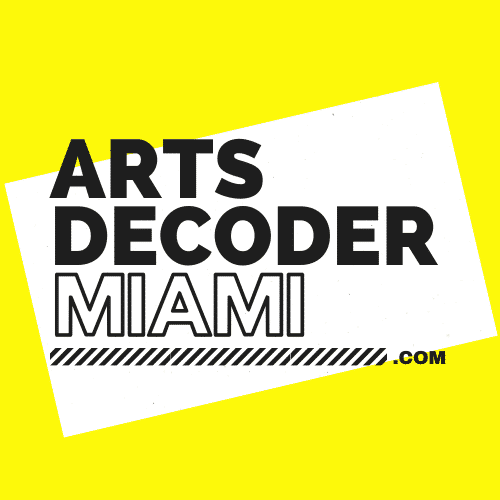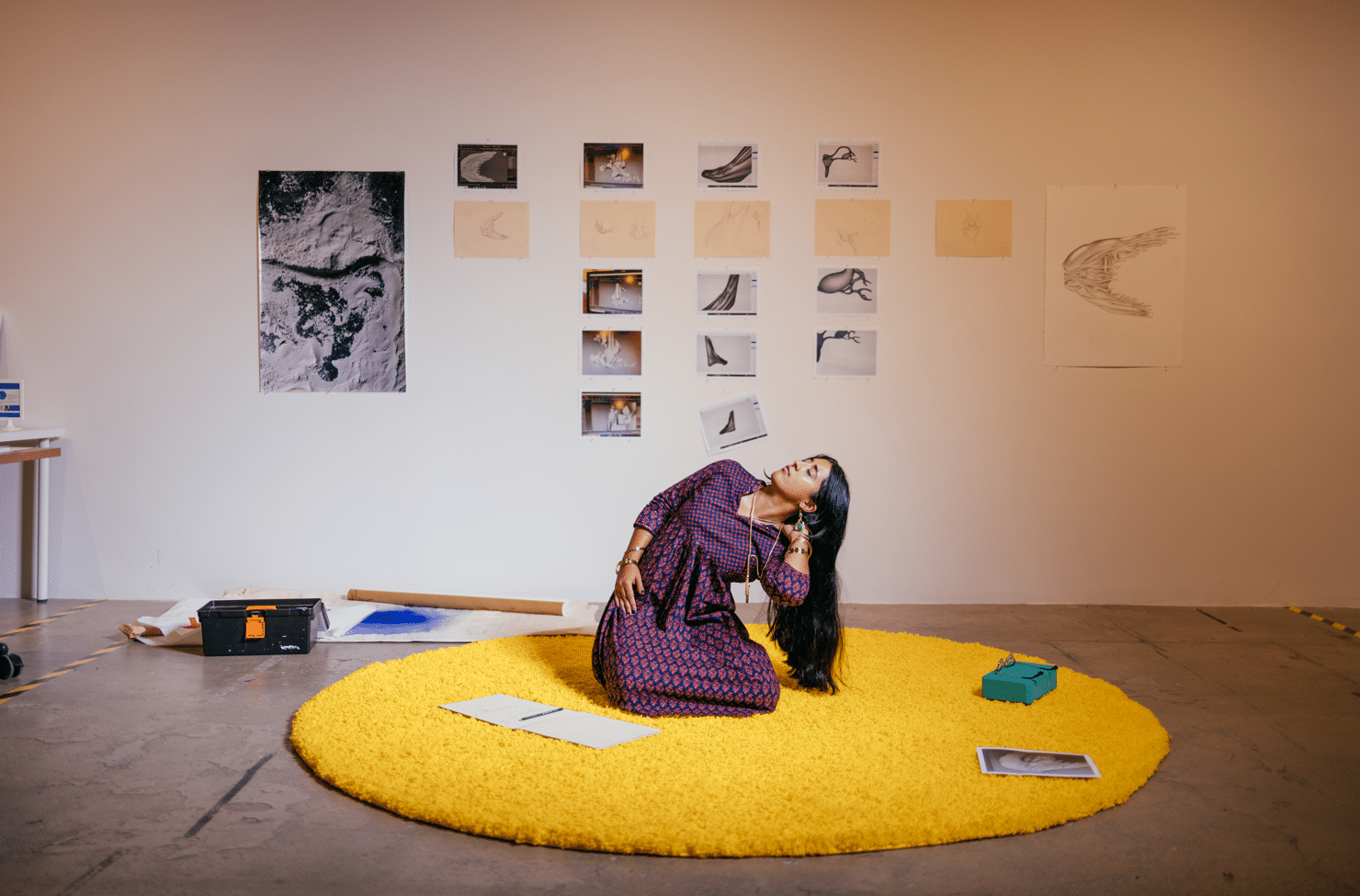
Smita Sen (The Human Body And Memory Artist)
Smita Sen is an artist working with sculpture, dance-based performance, and advanced technology to research how the body internalizes its environment and significant life events. With installations, Sen attempts to reimagine sites of care and creates environments for the body to enter states of meditative healing. Having served as a palliative caregiver in her family, Sen‘s recent work examines the nature of community, grief, and end-of-life care through the theory and praxis of narrative medicine.
Sen has had solo exhibitions at Recess (2021), the Brooklyn Public Library (2022), and the Museum of Contemporary Art, North Miami (2024-25), among others. Her work has been shown at The Museum of Modern Art (MoMA), the Frost Art Museum, the New World Center, and Socrates Sculpture Park, and has been featured in the NYTimes, Frieze, The Observer, and Dance Magazine. Sen has been awarded support, grants, residencies, and commissions from institutions including NEW INC, the New Museum’s incubator; Recess; Oolite Arts; the Bakehouse Arts Complex; and the Miami-Dade County Department of Cultural Affairs. She is a graduate of Columbia University (2016).
It was an honor to interview Smita Sen on March 26, 2025. We got to learn about Smita Sen’s artistry, community leadership and work as an educator.
Read all about our uncovering or watch the interview below!
Arts Decoder Miami – Indy: When did you begin creating art and what was your motivation to start?
Smita Sen: I began my professional career as an artist at about 20 years old. That was a little different from my origin as an artist, where my original work as an artist began when I was very young. I originally started as a dancer. I was training as a dancer here in Miami at a school called Armour Dance, which was previously the Miami Conservatory of Ballet. It’s a really special community based organization that gives offers like technical excellence but, really treats every child as an individual and really serves the wider Miami-Dade County community in a variety of different ways, really making people feel safe in their own bodies and making them feel supported as movers. It was really through being a student their that I felt empowered to use my voice artistically, first as a dancer and then later as I got older at the professional level I started to integrate that creative voice that I was able to develop at a young age into something more complex that I could offer as a grown lady in the world.
I think my motivation was not just about the way my teacher in my community taught me how to see myself as someone that had a voice that mattered but, also because I think that every artist has this kind of compulsion to make, and to share and to express and to connect with others and so even though I gave myself a lot of opportunities to walk away like if art is not something that you want then, it’s okay to do something else. I still felt I could make something that could have meaning for others, meaning for myself and that would connect people in a way that was empowering so, I think that that experience keeps me motivated to keep making art.
Arts Decoder Miami – Indy: Wonderful! As an artist what forms of art do you use to express yourself, like your vision?
Smita Sen: I started first as a dancer so, that really drove a lot of my practice where, I began from a place of understanding my body in a really intimate and complete way and that self understanding, that self reflection lent itself to the development of other types of technical expertise and technical knowledge. I started out with movement and dance that brought me closer to visual art, where visual art was also a way to support my self expression when I couldn’t dance properly, when I had injuries or things like that that would prevent me from doing like large scale performances. Visual art really supported me through those transition periods then, they started to become one in the same where one would support the other.
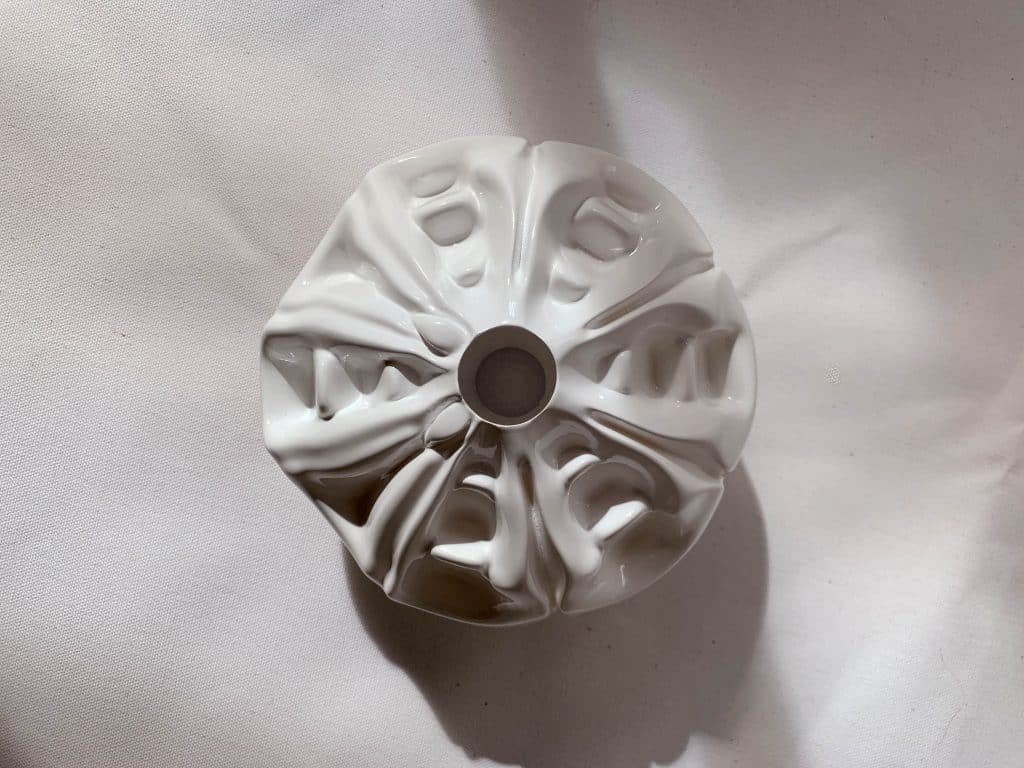
Anna from Manipura: Of Flower and Bones (2019)
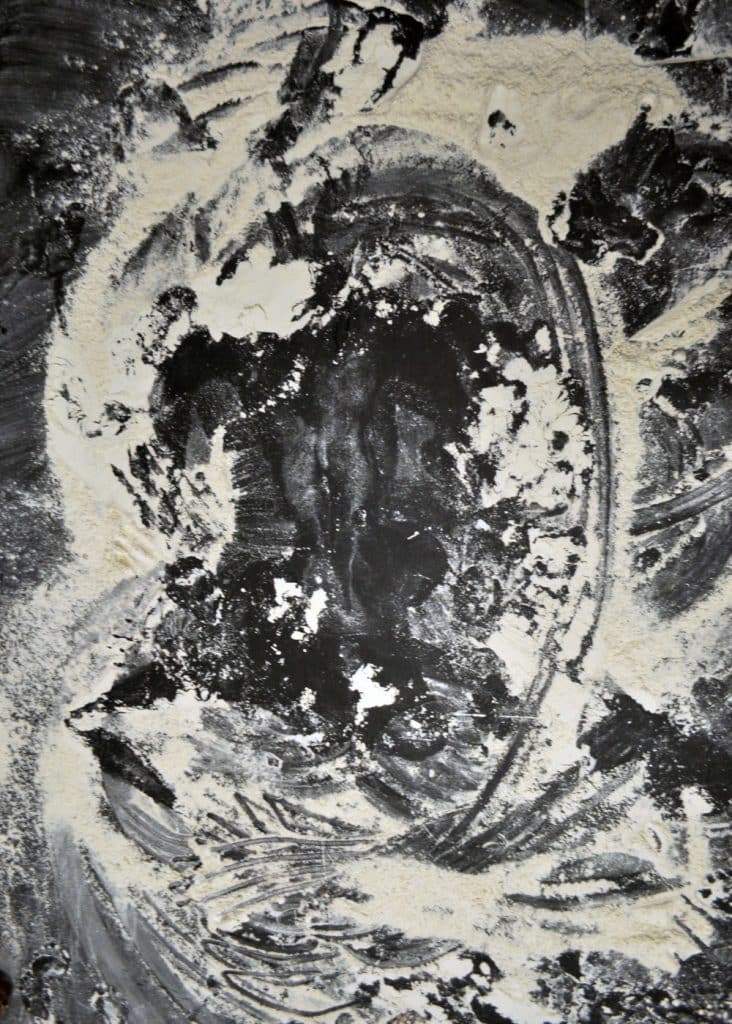
The Body Drawings
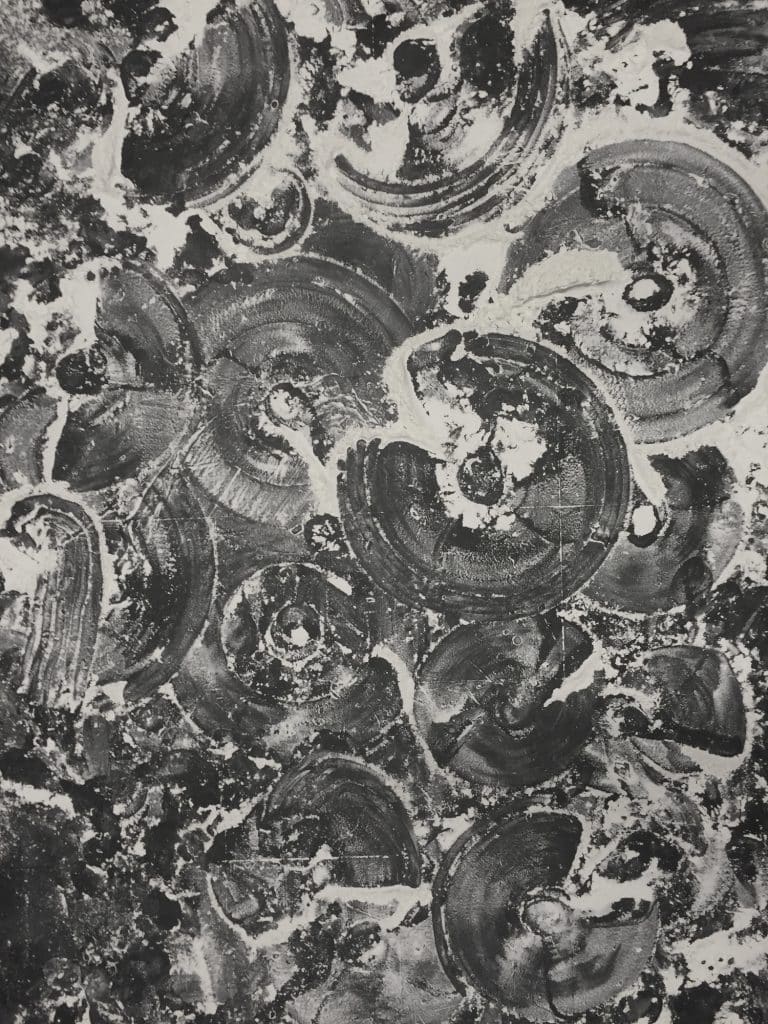
The Body Drawings
Writing was always a big, intimate part of my practice that being able to organize my thoughts into words and incorporating those into performance pieces into visual pieces became really significant. Then, of course in recent years, I was able to transform my recent practice into dance films into film making and I think that that fuels the total work of art, something that is able to bring everything together in a clear and coherent vision. So, yeah, I think I love all of it for different reasons at different times in a way that brings everything together in a meaningful way.
Arts Decoder Miami – Indy: Wow! That’s so different and I read on your website your artist statement and in that you mentioned the following, “working with sculpture, advance technology and performance, I investigate in my practice the dynamic relationship between the body and memory” and I thought that was very deep. Can you explain more about what you meant by that and how you came about creating your artwork based on body and memory?
Smita Sen: Absolutely! I think that this idea of starting my practice versus a dancer, really drove me in this direction of trying to understand my body and understand how memory sits in my body and our bodies over time. For me, it really was this kind of very profound exploration where, I would look at where memories would be localized in different parts of the body in interesting ways. Take for example, one of the things that is being studied right now in medicine is the fact that a lot of recipients of organ transplants will take on the memories and the preferences of the person that donated the organ, which is fascinating. Memory is not just something that sits up here in the mind, it’s something that is nestled in different corners of the body in unusual and unexpected ways.
There is always this kind of popular vernacular, this popular understanding of “muscle memory” that things just sit inside of us. Whether we remember it in our minds or not like riding a bike. There is something very real and tangible to that. So, I take those ideas and I try to identify specific experiences in my own memories and my own kind of embodied lived experience and also in others that I know and love. For me, the first kind of major exploration of that like a kind of community level was with the Manipura series and with those I was a palliative caregiver to my dad. I was one of his caregivers and I thought about the interdependence of ourselves and of our senses and of our physical bodies. I was really attentive to how his breathing would change or how it would sound when he was struggling to get up. I would start to become really sensitive to that and most caregivers build up that sensitivity as well, when they are taking care of someone who is very sick, someone who has palliative needs.
A lot of my work started to examine that on an interpersonal level and even now I am sort of building upon those ideas where I am thinking about hereditary illness and what do we inherit from the people that are a part of us. What becomes a part of us and what doesn’t and in what ways? It is very deep because memory is apart of all of us and bodies are a part of all of us and it’s just like this kind of universal set of questions that I’m really interested in exploring for a long time and its been really rewarding to explore it for a long time.
Arts Decoder Miami – Indy: Yeah! That’s so interesting, when you mentioned about hereditary memory. We don’t usually, yeah, we only think about the memory in our head and what we learned but, not so much like genetics, so, wow, that is so interesting.
Smita Sen: We talked about ancestral memories and our ancestors being a part of us and I think there is something to that. I think there is like a genetic memory and I might sound totally nuts but, I think there is something that is genetically shared with us from the people that we are from and I think that there is something more intimate than just features, something that is more intimate than just something superficial.
Arts Decoder Miami – Indy: Awesome! That is so cool! So, what places and spaces have you presented your artwork?
Smita Sen: I’ve been presenting my artwork at different spaces across the United States and even internationally. I think some of the venues have been great to be able to share my work in have included the Museum of Modern Art (MoMA) in New York City. I was able to perform there last year (2024) in June and that was a huge honor. It was really amazing and really special to be performing in that space. I performed in one of the basement theaters. I crawled up the audience passage way then, I came onto the stage then, came down. I did my 35 minute performance called, Rituals of Sacred Surrender, which is a collaboration with my Trina Basu. That was really special! But, I’ve also performed at other venues including Recess, which is a wonderful abolitionist art space in Brooklyn, as well as, the Brooklyn Public Library. I’ve performed around Miami as well at the Aspens Ideas Festival. I’ve also shown at the Museum of Contemporary Art and other venues too. I’m trying to remember all of them. It’s tough!
I think my earliest international showing was in Dubai in the UAE. That was really exciting as well! I’m hoping to spend more time sharing work in India and South Asia, where my family is from.
Arts Decoder Miami – Indy: Neat, so, yeah that is awesome! All those different places and you’re not just in one area but internationally as well. So, congratulations to you for all those achievements.
Smita Sen: Thank You! Thank you!
Arts Decoder Miami – Indy: Currently, do you have any work that is being exhibited anywhere that the public can go and see?
Smita Sen: The work that is currently available for folks to view is at the Museum of Contemporary Art, North Miami. The Embodied exhibition is still up and that is my first museum solo exhibition and it’s my first solo exhibition here in Florida, where I’ve exhibited previously in other parts of the country, but, this is my first in Florida, so, this has been really special. It’s a really, really large selection of my works over the last ten years from dance films to drawings to sculptures, as well as, performance documentation. It is a really special, special exhibition, so I hope folks can go see.
Arts Decoder Miami – Indy: Yeah! Wow! That spans across a lot of the art forms that you mentioned before that we can go there and see basically all of them. So, we heard that you are an educator, is that correct?
Smita Sen: Yes, I am!
Arts Decoder Miami – Indy: Can you tell us a little bit more about your background as an educator and how it links to the arts?
Smita Sen: Yes! So, I build design technology programs for different schools and so, I teach all ages. I love working with students to help them build a technical skillset that they can use for different parts of their life like if they are thinking about going down a technical career path or if they want to get jobs in design and technology, I want to equip them with those skills but, I’m also really sensitive to supporting and nurturing the creative voice so, that way creative young people really feel like this can be a part of their lives in a sustainable way, that their talent can be nurtured and part of themselves for a long time, so, they can feel safe expressing like complex ideas. So, I try to offer the simultaneity, where you can be a wild and courageous creative young person and you can build skills that can support you for the rest of your life. Those two things are not antithetical to one another. It’s something that I wanted as a child so, I’m happy to offer it to others. I think it has made me a better artist. I think it has made me a smarter artist. I think it has made me better at leading community dialogues and I think it’s also pushed me to really notice what people respond to in an artwork and when they are connecting with something and when they are not. Students are pretty fantastic about expressing when they connect with something and when they do not. It’s really good guidance. It’s good to see what stays with them no matter how abstract or unpredictable or strange. It’s interesting to see what has an impact and why? So, yeah! It’s been really rewarding and I love working in education.
Arts Decoder Miami – Indy: Wow! That’s neat! So, you’re a artist, an educator and also you are a community leader as a leader in a Miami-based arts education nonprofit. So, can you tell us a bit more about that nonprofit, its mission and your role in it?
Smita Sen: Sure! The Manipura Care Network was supported by one of the arts organizations that supported my artwork. So, Recess gave me the seed funding to start this organization and we provide arts education experiences to youth caregivers to young people who care for sick elderly or a disabled family member. An enormous part of what drew me to the work is that it was a part of my story as well. Art became one of the key sources of catharsis and self understanding and self reflection, when I was caring for my dad so, I wanted to offer the same source of support in a really robust and educational framework for youth caregivers. It’s been really special! We are in our third year of operations. We’ve run some really successful Summer programs, a really interesting workshop series. Yeah! The students we worked with have been really shining and it’s lovely to see how much they have grown over time and how they express themselves over time, how they connect with each other and with their own work and also hearing about their own experiences as caregivers and how that evolves. So, its been special to lead this organization.
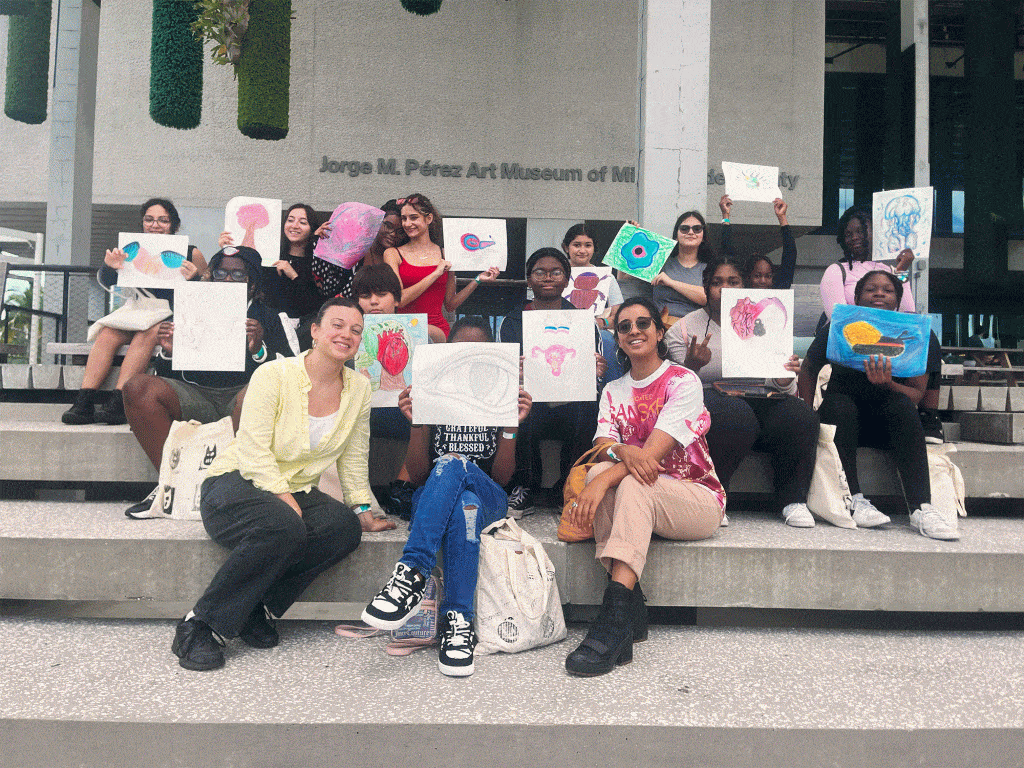
It is not easy. I think like leading an organization takes a lot of time, a lot of sensitivity. You have to really spend a lot of time building a meaningful network of community partners, you have to make sure families are onboard and that they feel supported. All of that has to happen so, I’m grateful that we could do it and I’m grateful that we could make it this far.
Arts Decoder Miami – Indy: Yeah! In three years, that’s amazing!
Smita Sen: It’s something.
Arts Decoder Miami – Indy: That’s awesome! How do you say the name of the nonprofit again?
Smita Sen: Sure! It’s the Manipura Care Network. It’s from the Manipura art series and it was built out of that.
Arts Decoder Miami – Indy: The link manipuracarenetwork.org is where one can go to discover like to sign up for programs?
Smita Sen: Ugh huh!
Arts Decoder Miami – Indy: What programs are available to the youth?
Smita Sen: We have the Summer program, which is a week long program of field trips, as well as, artist conversations and workshops and classes. It’s all fully funded…transportation is covered, everything is covered. We also have a fellowship program. We are kind of reintegrating the fellowship program so, that way our students can receive personal guidance and support depending on where they want to go and what they want to do after high school. If they are trying to apply to get into a high school, like giving them that support as well. You know giving our students a lot of different tools to succeed.
Arts Decoder Miami – Indy: Alright! So, you mentioned that you’re an artist that you’ve worked in New York, based in New York and also in Miami, so, I have to ask the famous question, what about Miami do you love in comparison to New York City?
Smita Sen: I love Miami! I think Miami is my home, it’s where I grew up. I think that there is a really strong sense of like artists supporting each other of a community supporting each other and coming together. It’s small so everybody has to really stay connected to their roots and to where they come from. I love New York but, for different reasons. The libraries are amazing, I think the museums are amazing, I think the people are really motivated into creating community driven initiatives. It’s just so different. I think that the scale is different, I think the winter, the cost of living, the kind of gritty competitiveness can often times erode the reason why we do what we do, which is for the art and for the creative process. So, one is not necessarily better than the other but, I do think that I really appreciated New York for what it taught me in terms of the strength of ones concepts like you have to really stay true to what you are doing and why you are doing it. You have to really like believe in the sincerity of the work in order for it to cut through the noise. I think that they taught me a lot of really critical skills in terms of learning how to be a really caring and thoughtful artist and then, being able to bring that back to Miami, which is so supportive and so, open, warm and nurturing, having those two things together has been really awesome.
Arts Decoder Miami – Indy: Yeah! So, that’s like the best of both worlds. So, how can the public reach you besides your website, do you have any other ways to reach you?
Smita Sen: I have my social handle…it’s one of the key ways that I connect with people that I don’t already know so, that they can see my work and engage with my work. I do my best to respond if someone sends me a message. If someone wants to communicate with me in another way, I have a contact form on my website for folks.
Arts Decoder Miami – Indy: Alright! It was wonderful learning all about you and your artistry and your background as an educator and a community leader in the nonprofit world in Miami and so, thank you so much, Smita for your time today and interviewing with us.
Smita Sen: Yeah! Thank you! Have a wonderful rest of your day.
Contact Smita Sen
Website: www.smitaksen.com
Instagram: www.instagram.com/smitatims
